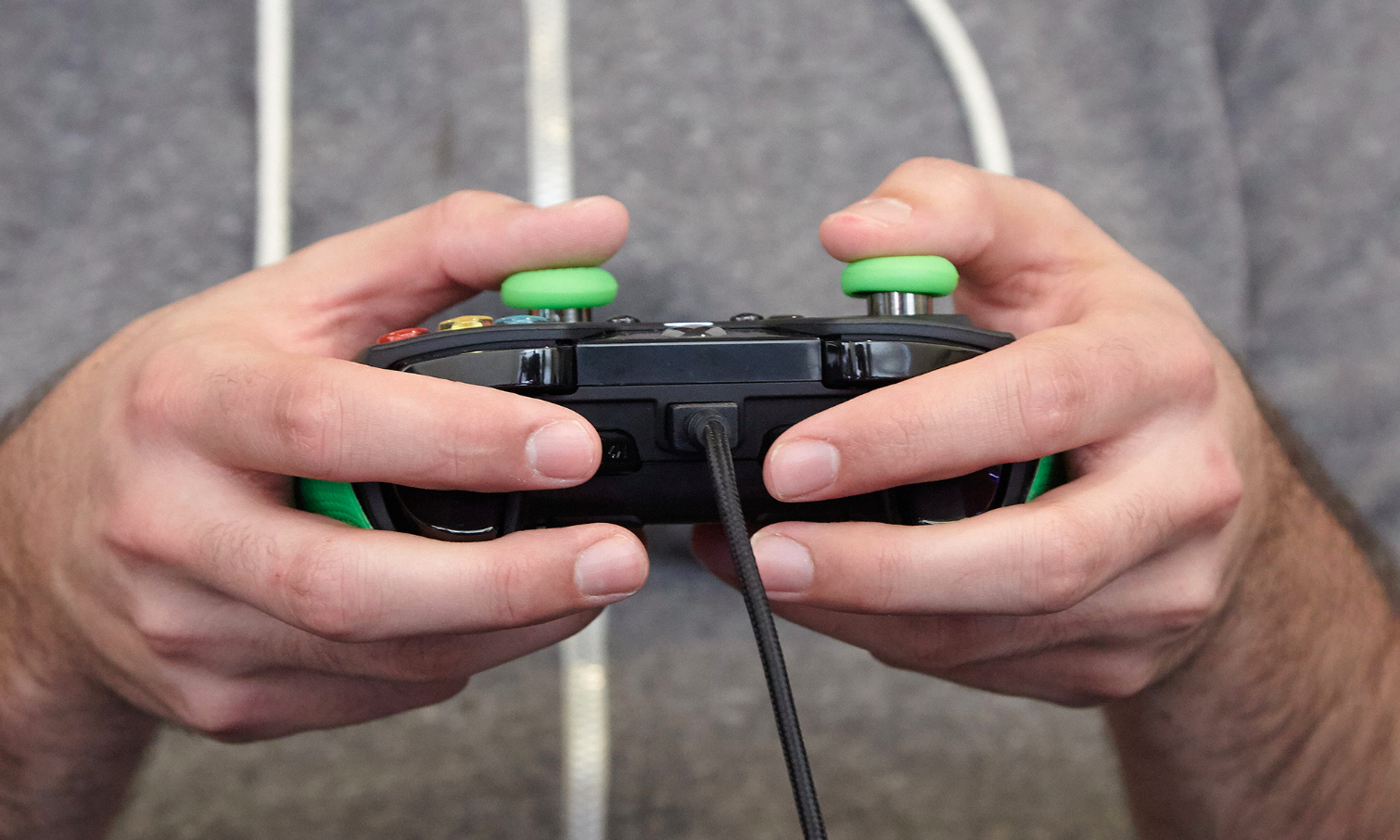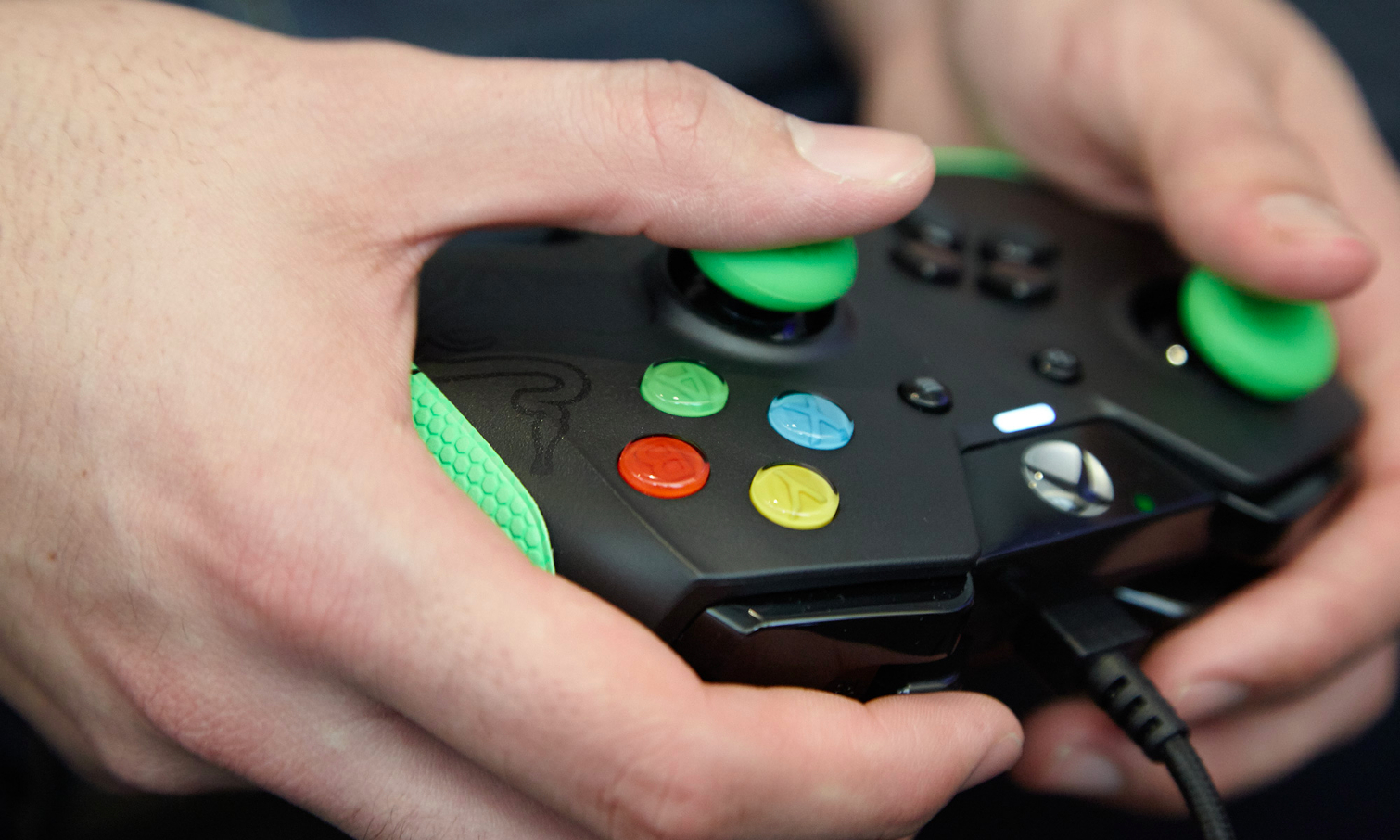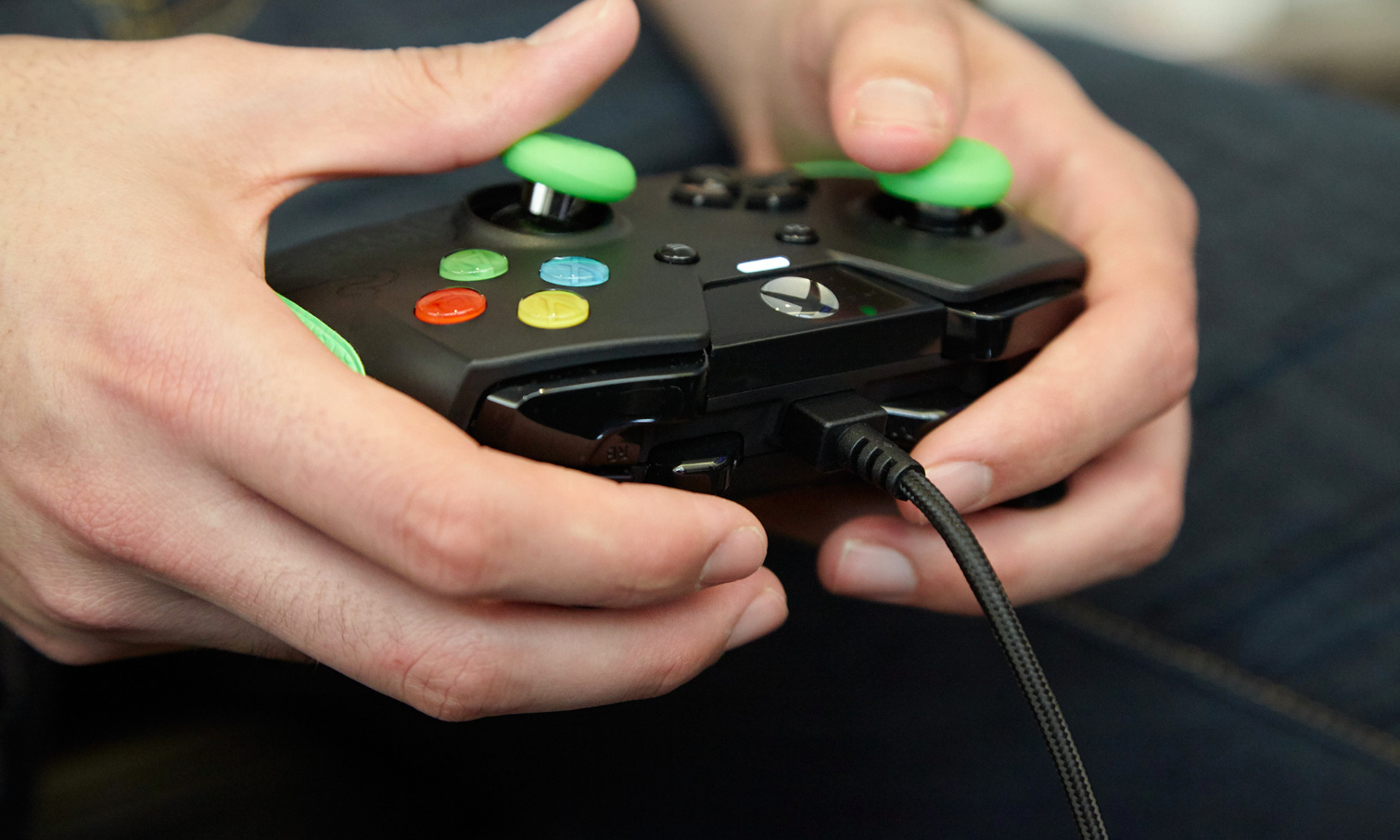Tom's Guide Verdict
The Razer Wildcat is an impressive gaming controller for pros and includes plenty of useful extras, but its overall design has room for improvement.
Pros
- +
Useful, intuitive extra buttons
- +
Easy to program
- +
Built-in audio controls
- +
Lightweight
Cons
- -
Handgrips feel cheap
- -
Limiting D-pad
- -
Swapping out triggers requires tool
Why you can trust Tom's Guide
Gaming peripherals are becoming tailored more toward professional gamers, and gamepads are no exception. The Razer Wildcat is a $150 Xbox One and PC controller built for those with e-sports aspirations, and includes four remappable extra buttons, built-in audio controls and optional grips designed to keep you glued to battle at all times. This premium pad has a ton of useful features for competitive players, but a few design drawbacks keep it from being truly ready for the big leagues.
Design and Comfort
The Razer Wildcat puts a clear focus on function over form — this plastic pad isn't likely to win any style awards. Save for its colored face buttons, the Wildcat sports a simple, all-black design that's accentuated slightly by Razer's snakelike logo on the bottom right.

The Wildcat becomes comfier and easier to hold once you attach its sporty-looking neon-green rubber grips, though their implementation feels cheap. The grips attach to the gamepad via adhesive material, though I had a hard time correctly lining them up with the shape of the controller. I worry about the adhesive's ability to last, and Razer itself says in the instruction manual that you might not be able to reattach the grips once you take them off.

This design is nowhere near as cozy or cohesive as Microsoft's Xbox One Elite Wireless Controller, which is coated entirely in soft-touch material with rigid grips built into the back. But although the Elite looks and feels nicer, the Wildcat has an advantage in the weight department. Razer's 9.2-ounce pad is notably lighter than the 12.3-ounce Elite and just a bit heavier than the default 8-ounce Xbox One controller. Some players might prefer the Elite's heft, but the Wildcat is less likely to give you hand fatigue after hours of play.
MORE: Best PC Game Controller
The Wildcat comes ready for your next tournament trip, with an included protective case that houses the controller, its accessories and its 10-foot cord within a big foam cushion.
Controls and Customization
In addition to the standard array of thumbsticks and face buttons, the Wildcat sports four extra inputs that you can program however you like. The M1 and M2 buttons provide two extra bumpers for your pointer fingers, while the removable M3 and M4 keys serve as extra triggers in the rear.
Get instant access to breaking news, the hottest reviews, great deals and helpful tips.
Mapping the extra buttons is a cinch: You simply hold down the remap button at the bottom of the Wildcat, hold down the M key you want to program and then tap whichever button you want it to mimic. The pad will rumble to confirm your selection, and the M button will start performing its new function instantly. You can create up to two custom button configurations using the pad's profile switch button, and you can remap the controls at any time — even in the middle of a heated Halo match.

While it's a breeze to remap the Wildcat's buttons on the fly, physically customizing them takes a bit more work. The removable M3 and M4 triggers have to be unscrewed via a tool that comes with the controller. This ensures that the triggers won't fall out while you're playing, but it also makes them difficult to swap out in between rounds. Fortunately, I found the M3 and M4 buttons comfortable enough to not want to take them off. But compared to the magnetic, easily removable rear paddles on the Elite controller, the Wildcat's screwed-in triggers seem like a mild inconvenience.
I'm a big fan of the Wildcat's thumbsticks, which are big and soft, and feel even better once you attach the optional grip covers. However, I noticed a good amount of friction when sliding the sticks around their surrounding rings — a problem I didn't have with the Elite's extra-smooth stainless-steel thumbstick shafts.
MORE: Best Gaming Mouse
The Wildcat's face buttons feel snappier and more mechanical than the Elite's, making it easy to mash them repeatedly when you need to get out of a tight spot. While I found the Elite's buttons more satisfying to press, the shorter travel of the Wildcat's inputs has clear benefits for people with twitchy fingers.
One of the Wildcat's most distinctive features is the Quick Control Panel, located just above its headset jack. In addition to button-remapping and profile-switching buttons, the panel features audio controls for muting your headset's mic and adjusting the game/chat volume balance — two functions that would otherwise require Microsoft's $25 Stereo Headset Adapter.
Gaming Performance
Although it took a while to get used to the Wildcat, its lightweight design and extra controls proved their worth in the heat of battle. The premium pad seems tailored primarily to shooter players, so it's no surprise that it added some significant new tools to my arsenal when I played Halo 5 and Gears of War: Ultimate Edition.

The extra triggers and bumpers make it possible to do things like run, jump and change weapons without ever taking your thumbs off the sticks, which is crucial for players seeking complete control over both combat and movement. Even better, since the additional inputs are located where my ring and pointer fingers normally rest, using them felt like second nature after a few matches.
The Wildcat's trigger locks allow you to lower the travel on either trigger to fire faster in shooting games. The feature requires just a quick flip of a switch, and made it extra easy for me to rapidly unload rounds from my magnum. One thing to keep in mind, though, is that you should activate the Wildcat's hair trigger mode (which heightens the triggers' sensitivity) before using the locks. If you don't, you'll have to squeeze harder to register a shot, which isn't something you want to worry about during competitive play.
With just a quick flip of a switch, the Wildcat made it easy for me to rapidly unload rounds from my magnum.
The Wildcat ditches the standard, unified D-pad design in favor of four independent directional buttons. This layout makes sense for shooter players looking to pinpoint the right direction when changing grenades or calling in airstrikes, but it's less-than-ideal for other genres, especially fighters.
The controller's D-pad kept me from performing Ultra Street Fighter IV's smooth special-move motions consistently, though I didn't have as much trouble with Mortal Kombat X's somewhat simpler attack inputs. However, messing up a combo even once can mean the difference between winning and losing, and I'm not confident enough in the Wildcat's D-pad to take it into battle online.
The Competition
It's impossible to look at the Wildcat and not compare it to the Elite; they're both $150 Xbox controllers designed for the highest-level gamers. But if the Elite is a tricked-out sports car with every extra goodie imaginable, the Wildcat is more of a speedy drag racer built for a single purpose.

The biggest advantages the Wildcat has over the Elite are its light weight, extra triggers and built-in audio controls. The triggers feel more intuitive than the Elite's paddles for certain genres, and unless you have a headset adapter, gamers using Microsoft's pad will be stuck fiddling with audio in the Settings menu. Also, whereas the Elite's soft-touch design feels like a dream, its hefty weight eventually made me take a break from using it after a few weeks.
When it comes to sheer options, however, the Elite can't be topped. Microsoft's controller offers three sets of thumbsticks, two different D-pads and four optional paddles that you can swap out at will, thanks to their magnetic designs. And whereas the Wildcat seems laser-focused on capturing shooter fans, the Elite is more of an all-around peripheral, with an optional circular D-pad for fighters, and paddles that feel intuitive for racing games.
MORE: Best PC Game Controller
The Elite benefits from the insanely robust Xbox Accessories app, which lets you fully remap any of the controller's buttons (the Wildcat lets you map only the extra M keys) while finely adjusting the sensitivity levels of the triggers and thumbsticks. Lastly, the Elite has the benefit of working wirelessly — and still includes a 9-foot cable for when you want to go wired.
Bottom Line
The Razer Wildcat is an impressive pro-gaming controller that falls just short of greatness. The peripheral's extra buttons feel intuitive and are incredibly easy to program, allowing you to run, jump and perform other crucial actions without taking your thumbs off of the sticks. Razer's pad works equally well on PC and Xbox One, and is light enough to keep your hands comfortable during marathon sessions.
While optional, the Wildcat's slap-on handgrips feel lazily implemented and keep the Wildcat from feeling like a truly premium product. Having to unscrew the controller's extra triggers to remove them is a bit of a pain, and the pad's slightly awkward D-pad makes it less than ideal for genres such as fighting games.
If you're a serious first-person-shooter player looking for a lightweight pad with extra controls, the Wildcat still has plenty to offer. It just simply doesn't feel like a $150 product yet, especially when compared to Microsoft's extrarobust Elite Wireless Controller.
Mike Andronico is Senior Writer at CNNUnderscored. He was formerly Managing Editor at Tom's Guide, where he wrote extensively on gaming, as well as running the show on the news front. When not at work, you can usually catch him playing Street Fighter, devouring Twitch streams and trying to convince people that Hawkeye is the best Avenger.

